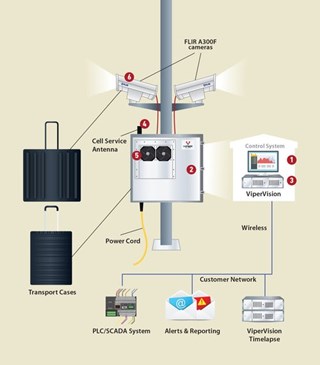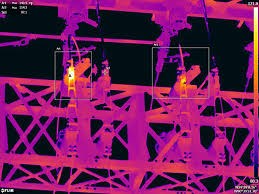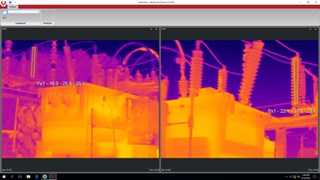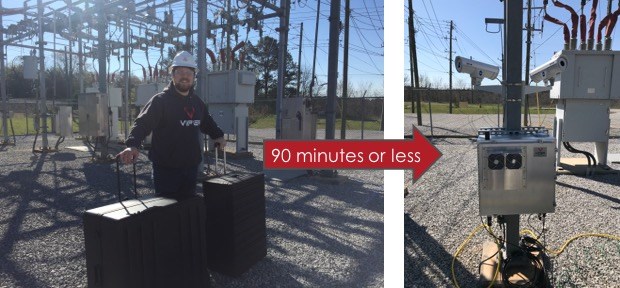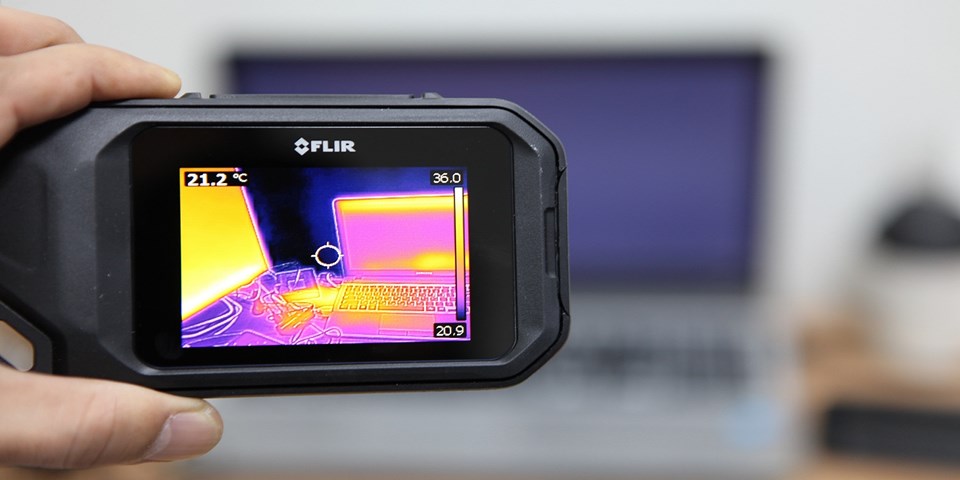Viper recently worked on a solution with a major utility company, known as an innovation leader in the production of clean, safe and reliable energy. The company collaborated with the substation engineering team at one of the company’s facilities that generates electricity to provide service to nearly 1.5 million customers.
The Substation Support Manager approached Viper to develop a means of monitoring multiple substation locations. Due to the substantial investment it would take to cover every substation location in the state, he asked for a remote monitoring solution that could be transported from one site to another, as needed. After these initial discussions, Viper cooperated closely with the Substation Support Engineer to design a system that would meet their needs. Subsequently, Viper designed an innovative, portable system that can be implemented on a temporary (or permanent) basis at almost any substation. By use of such a system, engineering teams are equipped to respond in real time to sudden changes, facilitating continued uptime while working safely and effectively.

Before contacting Viper Imaging, the Substation Support Engineer said that his team relied on manual inspection, using handheld thermal imaging cameras to identify problems before failures occurred. These traditional methods proved ineffective in preventing downtime due to limitations of both time and manpower, as well as increased potential for human error. He mentioned that a CCVT (Capacitively Coupled Voltage Transformer) can go down in one minute – resulting in significant downtime. He added, “This also presents a safety hazard, as CCVT’s can explode during failure, sending out shrapnel that can injure employees or damage other equipment.” One can easily see the advantages of constant remote monitoring as opposed to manual inspection.
Solution
Installation of Viper’s Quick Deploy Substation Monitoring Kit provided remote monitoring that could easily be positioned to monitor critical monitoring assets and then transported to another location as needs change. Installation was complete in about 90 minutes, consisting of two FLIR thermal imaging cameras integrated with ViperVision software for continuous monitoring. In addition to the camera capabilities and integrated software, the Substation Support Engineer and the Equipment Testing Supervisor were pleased with the ease of setup and the system’s portability.

Temperature increases in substation components are monitored by the system which can alarm when a component exceeds or falls below a pre-set temperature range, providing early warnings via email, text and control point verification. This allows for proactive maintenance and reduces the risk of catastrophic failure. The software directly communicates with the industrial platform controller via a variety of standard protocols. Temperature data is displayed on a monitor in real time, and hot spots are evident before excessive heat or insulation loss results in failure. The software analyzes and compares the data against predefined parameters and triggers an alarm if warranted. These parameters can be adjusted based on the specific application needs, and all data can be saved for process analysis and quality control.
Outcome
Since implementing the use of Viper’s Quick Deploy Substation Monitoring System, the Substation Support Engineer and Equipment Testing Team rely on the data it provides. It has allowed them to extend the uptime of critical components until a better time for shutdown and replacement of the component.
The software, paired with thermal imaging cameras, has provided an effective solution for measuring temperature to assess substation component reliability.
